 I read the original novel in the hopes that perhaps it would offer a redemptive or meaningful ending, but unfortunately, that was wishful thinking. The story only continues to descend into deeper psychological and physical torment. Eventually, the uke chooses to stay with the seme, not out of love or healing, but due to long-term manipulation and isolation. The seme confines him to a single room and treats him like a pet—literally using pee pads for dogs. The uke, deprived of any meaningful human connection, begins to crave even the seme's abusive touch simply because it's the only form of contact he receives.
I read the original novel in the hopes that perhaps it would offer a redemptive or meaningful ending, but unfortunately, that was wishful thinking. The story only continues to descend into deeper psychological and physical torment. Eventually, the uke chooses to stay with the seme, not out of love or healing, but due to long-term manipulation and isolation. The seme confines him to a single room and treats him like a pet—literally using pee pads for dogs. The uke, deprived of any meaningful human connection, begins to crave even the seme's abusive touch simply because it's the only form of contact he receives.He later escapes, only to be gang raped again—this time by people he once considered friends. In a disturbing sequence, the seme recounts the events of their high school history while the uke is being assaulted. To summarize that backstory: the uke and seme attended the same high school, where the uke—along with his friends—raped and humiliated the seme, even distributing videos of the abuse. Eventually, the uke was injured in a fight and lost his memories, which triggered the seme’s elaborate plan for revenge. He intentionally enrolled at the same university to manipulate the uke, despite the latter having no recollection of the past.
After the second assault, the uke is hospitalized with severe injuries, like broken bones, and falls into a coma. During that time, he dreams of their shared past and begins to confront feelings he may have had for the seme—complicated by internalized homophobia. When he wakes up, he panics at the idea of facing further violence and begs the seme to stay with him out of fear. This leads to their continued, toxic entanglement.
The uke begins hallucinating as a result of his trauma and even attempts suicide. The abuse doesn’t end—in fact, the seme resumes degrading him: sending him to school with a vibrator inside him, tying him up in bathroom stalls (mirroring the abuse the seme once suffered), and reasserting control. Eventually, the uke pleads with him not to leave. The story ends with them together, though not in any emotionally healthy or consensual sense of the word.
The novel is undeniably psychological, and how readers interpret it will largely depend on their own values, sensitivities, and understanding of trauma. On one hand, it's true that the uke committed horrific acts as a teenager, and the seme’s desire for revenge is not entirely unfounded. On the other hand, the uke's amnesia removes the possibility of true reckoning, making the seme’s retaliation more like prolonged sadism than actual justice. Even a character within the story tells the seme he’s gone too far.
Both characters are deeply flawed and morally compromised. One could argue that they deserve each other, but that doesn’t erase the sheer discomfort that comes from witnessing the uke's suffering, especially when he becomes a shell of himself, clinging to the very person responsible for breaking him.
As someone who studied both writing and the sociology of rape in college, I find myself grappling with stories like this. It’s disturbing to see a “revenge” arc constructed almost entirely around themes of rape, manipulation, and dehumanization. These are real-life horrors, and while fiction can absolutely explore difficult topics, the way these elements are portrayed matters immensely. This isn’t a romance—it’s the story of a person being methodically dismantled until they believe abuse is love, which is textbook psychological conditioning.
It’s hard not to see stories like this—and others like Sadistic Beauty: BL Story—as glamorizing or fetishizing rape. The storytelling doesn’t challenge the violence; it seems to dwell in it. Of course, many survivors do stay with their abusers, for complicated and tragic reasons. If the author had handled these themes with more nuance or sensitivity, the narrative might’ve stood as a dark but important portrayal of trauma bonding. But instead, the framing often feels like it's catering to a rape fantasy rather than condemning it. That’s what unsettles me the most.
2025-07-25 16:50 marked
hi im drunk and heartbroken any bl recs for me ?
2025-06-06 04:36 marked
2025-05-17 14:05 marked
oops, this item doesn't exist any more
2025-04-18 17:54 marked
2024-11-24 16:18 marked
2024-10-14 14:22 marked
 The interesting thing is in the around the early 1900s, sex acts were (for the most part) still seen as separate from identity. (This is all USA centric idk as much about queer history in the rest of the world sorry :( )
The interesting thing is in the around the early 1900s, sex acts were (for the most part) still seen as separate from identity. (This is all USA centric idk as much about queer history in the rest of the world sorry :( )Back then sexuality and gender were more tied up, so “homosexual” would refer to men that presented more feminine, not necessarily men attracted to men (same thing with women and lesbians). It was seen as gender “inversion”. So men that had sex with men were still seen, essentially, as straight as long as they topped and were masculine. Those men were still able to return to their wives and jobs, and were still seen as “normal”. It was the feminine men that were more likely the bottoms than were seen as outside of “the norm”.
I have to mention, in Harlem (1920s ish) there were massive drag balls (and other smaller parties), where ppl would cross dress. Some of these parties had thousands of attendees, and some were middle/upper class white ppl. There were also smaller scale, queer-centric parties. Performing, like at jazz clubs, also gave ppl freedom to experiment with their gender presentation (Gladys Bentley is the best we all stan).
Things of course progressively changed. The Great Depression ended the larger scale parties, but of course there was still a queer community within Harlem. the lavender scare (1940-70s) caused queer people to be be fired from their jobs, and queer ppl were excluded from the GI bill plus dishonorably discharged from the military. The state actively punishing queer ppl helped cement heterosexuality as the norm and homosexuality as “deviant”.
Anyways it makes sense why a straight man won’t see topping someone as gay LMAO
2024-06-11 09:05 marked
2024-01-27 02:32 marked
2023-11-17 05:23 marked
2021-07-20 19:11 marked
Hey guys can you recommend your absolute favorite comedy bl??
2021-06-12 12:42 marked
2021-05-20 15:18 marked
2021-05-15 13:22 marked
2021-05-15 13:20 marked



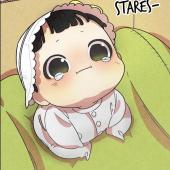
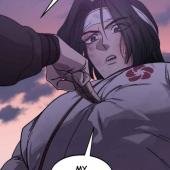






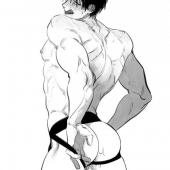


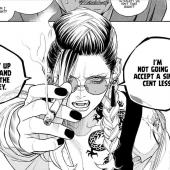
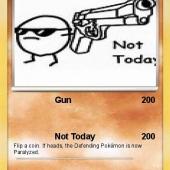

Novel spoilers